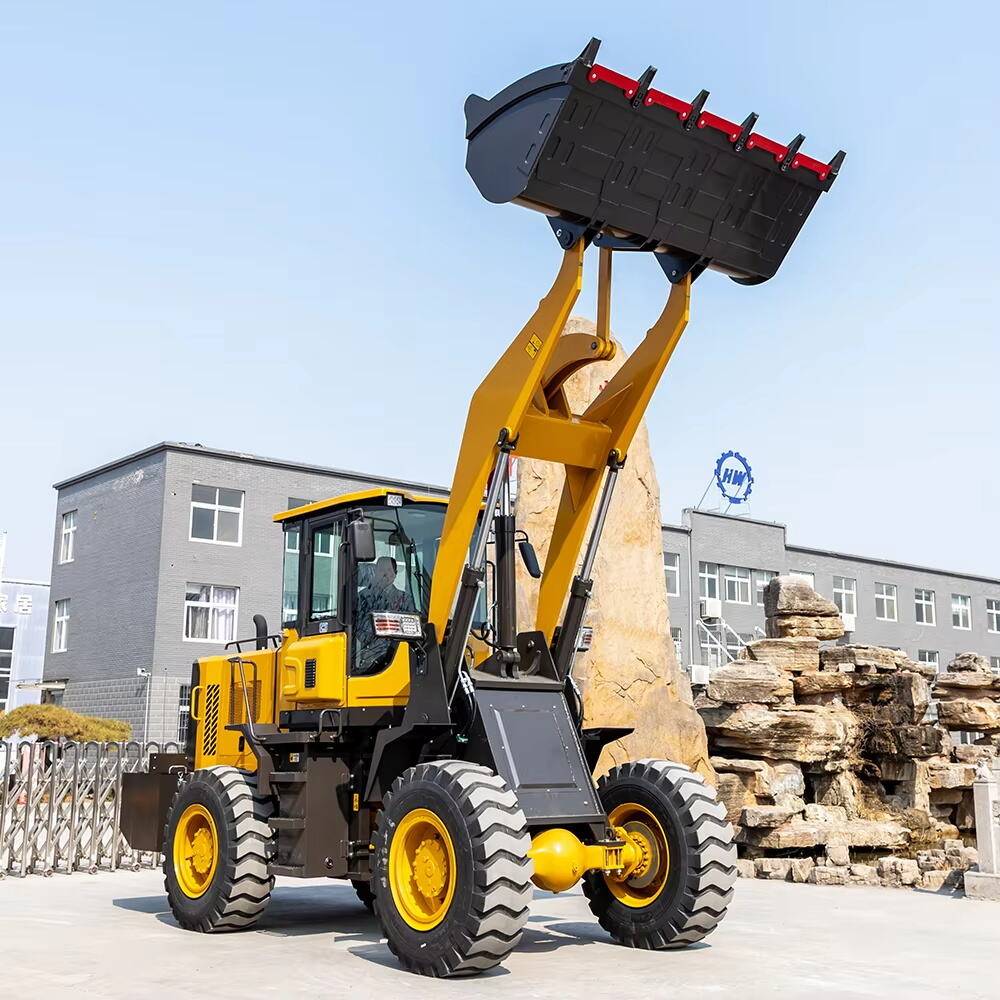In modern construction projects, selecting the right machinery determines both speed and efficiency. Among all types of heavy equipment, the loader plays a pivotal role due to its versatility, operational power, and productivity impact. Whether it's earthmoving, loading, or material transport, a well-matched loader can significantly enhance on-site performance while reducing operational downtime. The decision, however, is not only about brand or cost but extends into technical suitability, terrain adaptability, and task alignment.
A loader is indispensable for its wide range of applications. From loading sand, gravel, and debris to moving heavy materials across short distances, this machine often operates as the backbone of construction logistics. Its adaptability to various attachments such as buckets, forks, and grapples allows a loader to shift roles throughout the day without major adjustments. This flexibility makes it a smart investment for both small contractors and large-scale construction firms.
Modern loader design integrates advanced hydraulics, intuitive operator controls, and rugged construction. Loaders generally come with articulated steering and high breakout force, enabling them to navigate tight spaces while handling substantial loads. The engine power, lifting capacity, and transmission type all directly influence its effectiveness on-site. Understanding how these components function together ensures optimal selection and long-term durability.

Wheel loaders are widely used across construction due to their mobility, speed, and efficiency on even terrain. Equipped with large tires and articulated frames, they are ideal for road building, aggregate handling, and municipal work. Their powerful engines and swift travel speed enable them to complete high-volume loading tasks with ease.
Track loaders provide superior traction and stability on soft, uneven, or muddy surfaces. They distribute weight evenly and reduce ground pressure, making them highly effective for excavation, landscaping, and foundation work. While they are generally slower than wheeled versions, track loaders excel in terrains where wheels might slip or sink.
One of the most important considerations is the scale of your project. Smaller construction sites may benefit from compact or mini loaders that offer precision and mobility. For large infrastructure work, full-size or heavy-duty loaders deliver the force and bucket capacity required to move significant volumes efficiently.
Assessing your site's ground composition is vital. Urban construction typically features flat, paved environments where wheel loaders shine. Conversely, remote or undeveloped areas with loose soil, rocks, or wet conditions necessitate track loaders to prevent bogging down and to improve maneuverability.
Different types of buckets can transform the way a loader operates. General-purpose buckets are suited for everyday materials, while rock buckets are reinforced for handling abrasive items. High-dump buckets are helpful for loading into taller trucks or containers. Selecting the right bucket ensures operational efficiency and extended attachment life.
Loaders support a variety of tools beyond buckets. Forks allow for pallet transport, grapples manage loose materials like logs or scrap metal, and snow blades offer seasonal versatility. The ability to quickly swap attachments makes a loader more than just a mover—it becomes a multifunctional site assistant.
Operator productivity is directly influenced by comfort and visibility. Modern loaders come with enclosed cabs, climate control, and adjustable seating. Wide-view windows and backup cameras enhance operational safety by reducing blind spots and improving maneuvering accuracy, especially in tight or busy areas.
Safety mechanisms such as rollover protection systems (ROPS), seatbelt indicators, and load management systems are essential. Choose loaders that meet local regulatory requirements and emphasize operator safety without sacrificing performance. Loader reliability also contributes to fewer site incidents and maintenance costs.
Performance metrics like horsepower, torque, and load cycle time determine how efficiently a loader completes tasks. Faster load cycles contribute to reduced machine hours and fuel usage. Select a loader with the right balance between power and fuel efficiency to optimize productivity.
As sustainability becomes more important in construction, loaders with low emissions and energy-efficient engines gain preference. Many newer models feature advanced combustion systems or hybrid technology that meet Tier 4 emission standards, aligning with eco-conscious building goals.
Routine maintenance is simplified in loaders with ground-level access panels, centralized grease points, and digital diagnostics. A machine that is easy to service reduces downtime and extends operational life, contributing to a better return on investment.
Purchasing a loader isn’t just about upfront price. Factor in the long-term costs, including fuel, maintenance, depreciation, and potential resale value. Models known for durability and low failure rates tend to deliver greater value over time.
Loaders that feature telematics allow remote tracking of performance, fuel consumption, location, and maintenance schedules. Integrating this data into your project management tools can improve efficiency and predict future servicing needs.
Some loaders are now capable of syncing with Building Information Modeling (BIM) and broader fleet management systems. This level of integration ensures real-time coordination across construction phases, particularly useful in large-scale infrastructure projects.
Beyond the machine itself, after-sales support is a crucial factor. Choose a loader from manufacturers with a proven supply chain, available spare parts, and reliable customer service. This ensures minimal delays if repairs are ever needed.
Depending on project duration and equipment needs, renting a loader might be more economical than purchasing. For long-term or frequent use, owning the loader could be a better investment. Analyze your workload and financial model to make the right decision.
For compact or urban jobsites, a mini loader or compact wheel loader is often the best choice due to their agility and ability to work in confined spaces. They offer the necessary power without occupying too much room.
Routine checks should be done daily, with scheduled maintenance every 250 to 500 operating hours depending on the manufacturer's guidelines. Regular servicing improves lifespan and performance.
Electric loaders are gaining traction for their environmental benefits, but they currently excel in light to medium-duty applications. For heavy-duty tasks, diesel-powered loaders still dominate, although advancements are closing this gap.
Yes, many loaders support interchangeable attachments that allow them to switch between digging, lifting, material handling, and snow removal. This makes them extremely versatile across different phases of a project.
 Hot News
Hot News2024-10-31
2024-10-28
2024-10-25
2024-10-23
2024-10-21
2024-09-03